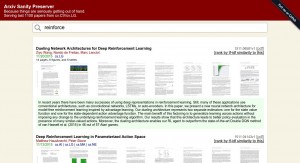Nuremberg Trial Verdicts by Jenny Gesley.
From the post:
Seventy years ago – on October 1, 1946 – the Nuremberg trial, one of the most prominent trials of the last century, concluded when the International Military Tribunal (IMT) issued the verdicts for the main war criminals of the Second World War. The IMT sentenced twelve of the defendants to death, seven to terms of imprisonment ranging from ten years to life, and acquitted three.
The IMT was established on August 8, 1945 by the United Kingdom (UK), the United States of America, the French Republic, and the Union of Soviet Socialist Republics (U.S.S.R.) for the trial of war criminals whose offenses had no particular geographical location. The defendants were indicted for (1) crimes against peace, (2) war crimes, (3) crimes against humanity, and of (4) a common plan or conspiracy to commit those aforementioned crimes. The trial began on November 20, 1945 and a total of 403 open sessions were held. The prosecution called thirty-three witnesses, whereas the defense questioned sixty-one witnesses, in addition to 143 witnesses who gave evidence for the defense by means of written answers to interrogatories. The hearing of evidence and the closing statements were concluded on August 31, 1946.
The individuals named as defendants in the trial were Hermann Wilhelm Göring, Rudolf Hess, Joachim von Ribbentrop, Robert Ley, Wilhelm Keitel, Ernst Kaltenbrunner, Alfred Rosenberg, Hans Frank, Wilhelm Frick, Julius Streicher, Walter Funk, Hjalmar Schacht, Karl Dönitz, Erich Raeder, Baldur von Schirach, Fritz Sauckel, Alfred Jodl, Martin Bormann, Franz von Papen, Arthur Seyss-Inquart, Albert Speer, Constantin von Neurath, Hans Fritzsche, and Gustav Krupp von Bohlen und Halbach. All individual defendants appeared before the IMT, except for Robert Ley, who committed suicide in prison on October 25, 1945; Gustav Krupp von Bolden und Halbach, who was seriously ill; and Martin Borman, who was not in custody and whom the IMT decided to try in absentia. Pleas of “not guilty” were entered by all the defendants.
…
The trial record is spread over forty-two volumes, “The Blue Series,” Trial of the Major War Criminals before the International Military Tribunal Nuremberg, 14 November 1945 – 1 October 1946.
All forty-two volumes are available in PDF format and should prove to be a more difficult indexing, mining, modeling, searching challenge than twitter feeds.
Imagine instead of “text” similarity, these volumes were mined for “deed” similarity. Similarity to deeds being performed now. By present day agents.
Instead of seldom visited dusty volumes in the library stacks, “The Blue Series” could develop a sharp bite.
